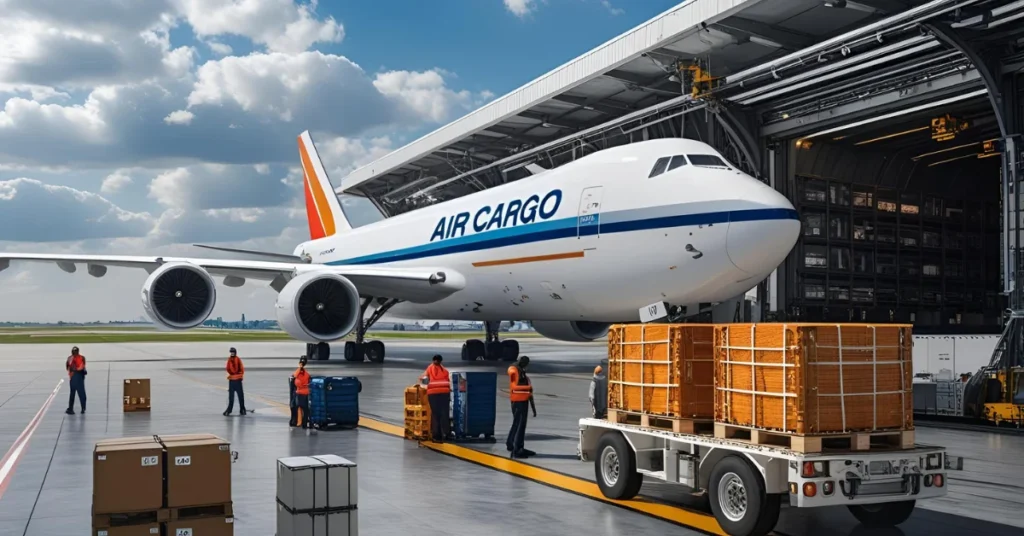IATA cargo opearation Manuals now include improved procedures for handling dangerous goods, new guidelines for terminal operations, and recommendations on reducing single-use plastics.
IATA Cargo Operations Manuals: Overview
The International Air Transport Association (IATA) has just released the 2025 editions of its Cargo Operations Manuals, which are essential guides for the air cargo industry.
This year, these manuals include over 350 changes to meet new industry standards, legal requirements, and best practices. These updates aim to help companies stay compliant and work more efficiently in the busy air cargo sector.
Air cargo plays a crucial role in global trade, moving goods like electronics, food, and medicine all around the world.
With the growth of e-commerce and faster shipping demands, the air cargo industry must adapt quickly to keep up. The 2025 manuals address these changes and provide clear guidelines to improve safety, security, and environmental responsibility.
For example, the manuals now include improved procedures for handling dangerous goods, new guidelines for terminal operations, and recommendations on reducing single-use plastics.
By following these updated standards, companies can ensure they are not only compliant with regulations but also contributing to sustainable practices in the industry.
This is important because air cargo contributes to greenhouse gas emissions, and every effort to be more eco-friendly helps protect our planet. In summary, these updates from IATA are vital for anyone involved in air cargo, emphasizing safety, efficiency, and a commitment to sustainability.
Key Highlights of IATA Cargo Operations Manuals 2025

- IATA Cargo Handling Manual (ICHM) – 9th Edition
- Shipper Built Unit Load Devices (ULDs): New safety standards have been created for handling ULDs, which are containers for transporting cargo. This helps ensure that cargo is managed safely.
- Terminal Operations: There are new guidelines for activities at the terminals where cargo is loaded and unloaded, particularly at shipper and freight forwarder locations.
- Sustainability Initiatives: The manual includes suggestions for reducing the use of single-use plastics, which is good for the environment. It also promotes the integration of IATA’s environmental assessment protocols.
- Cargo Security: The manuals have added information to improve security measures for cargo, making it safer during transportation.
- Human Remains Handling: Updated procedures for transporting human remains now include clearer language and guidelines, ensuring respectful handling.
- Dangerous Goods Regulations (DGR) – 66th Edition
- Regulatory Alignment: This edition includes the latest international standards to ensure dangerous goods (like chemicals or flammable materials) are transported safely.
- Operational Guidance: The manuals provide detailed instructions on how to handle, package, and document dangerous goods. This is vital to prevent accidents and ensure safety.
- Special Cargo Publications
- Live Animals and Perishables: Updated guidelines ensure the safe and humane transport of live animals and perishable items, with clearer container requirements to protect these delicate shipments.
- CITES Compliance: Changes to the chapter on the Convention on International Trade in Endangered Species (CITES) help ensure that companies follow international laws protecting endangered species.
- Packaging Standards: The manuals now include better guidelines for leak-proof packaging, especially for seafood shipments, ensuring products arrive safely and in good condition.
IATA Special Cargo Publications
Industry Context and Historical Developments
IATA’s manuals are updated annually, showing the organization’s dedication to keeping pace with the fast-changing air cargo landscape. In 2024, there were over 300 changes focusing on crucial areas like safety, sustainability, and efficiency.
The updates for 2025 build on this work, addressing new challenges such as environmental concerns and the importance of having standardized procedures worldwide.
As e-commerce continues to grow, the air cargo industry must adapt to meet the higher demands of quick delivery times and sustainable practices.
The new updates reflect these needs and help the industry stay ahead of the curve while ensuring safety and compliance.
Compliance and Operational Implications
For businesses in the air cargo industry, these updates have several important implications:
- Training and Education: Companies must train their employees on the new procedures and standards to remain compliant. Staff should be aware of the updated guidelines, especially concerning cargo handling and dangerous goods.
- Operational Adjustments: Organizations should review their internal processes to align with the new guidelines, ensuring changes are made to ULD handling and the transportation of dangerous goods.
- Sustainability Goals: Adopting the recommended practices for reducing environmental impact will be crucial. This includes minimizing single-use plastics and exploring other eco-friendly options.
2025 IATA Cargo Operations Manuals: Editor’s Insight

The 2025 IATA Cargo Operations Manuals are more than just guides; they represent the future of air cargo operations. As our world becomes more connected, the demand for efficient and safe air cargo transport continues to rise. These updated manuals improve safety and compliance while emphasizing the environmental responsibilities of the industry.
For companies involved in air cargo, embracing these changes is essential. The updates reflect a commitment to sustainability, which is increasingly important to consumers and regulators alike.
By reducing single-use plastics and enhancing packaging standards, the air cargo industry can contribute to a healthier planet.
Moreover, the emphasis on training and education ensures that all employees are equipped with the knowledge necessary to handle cargo responsibly. In an industry where a small mistake can lead to significant issues, this training is invaluable.
Overall, these updates provide a pathway for the air cargo industry to thrive while addressing pressing global challenges. By focusing on safety, compliance, and sustainability, IATA’s manuals are paving the way for a successful future in air cargo operations.
Source: IATA Publication

